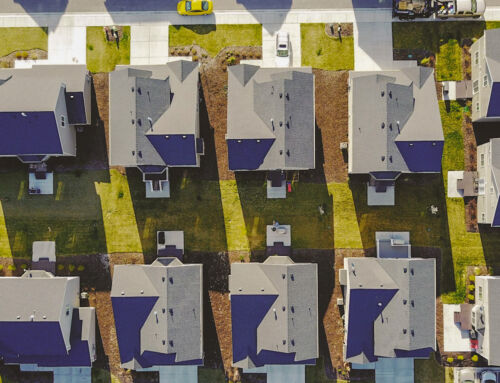View by Topic
Recent Articles
-
President Trump’s Bold Step to Rein in State Overreach in Climate ChangeSaturday, April 12th, 2025
-
Mandatory GHG Disclosures in Maryland Real Estate ContractsSaturday, April 5th, 2025
-
NYC Building Electrification Ruling is Interesting But Not a Game ChangerSaturday, March 29th, 2025
-
Greenpeace Ordered to Pay $667M in Blow to ActivismSaturday, March 22nd, 2025
-
The Most Consequential Day of Environmental Deregulation in American HistorySaturday, March 15th, 2025
View by Month/Year
“Green Building Law Update” Headlines
Recent Articles & News from
Stuart Kaplow’s blog
at GreenBuildingLawUpdate.com
- President Trump’s Bold Step to Rein in State Overreach in Climate Change April 13, 2025
- Mandatory GHG Disclosures in Maryland Real Estate Contracts April 6, 2025
- NYC Building Electrification Ruling is Interesting But Not a Game Changer March 30, 2025
- Greenpeace Ordered to Pay $667M in Legal Blow to Environmental Activism March 23, 2025
Subscribe to the Green Building Law Update!
Stuart Kaplow brings his expertise and extensive experience to the table with his unique digital publication, "Green Building Law Update". Subscribers receive regular updates to keep them informed about important issues surrounding Environmental Law, Green Building & Real Estate Law, as well as the emerging demand for Environmental Social Governance (ESG).
Get fresh content through the lense of Stuart Kaplow's cutting-edge expertise, innovative commentary and insider perspective. Don't miss another issue! Subscribe below.
A Checklist For Telecommunication Site Leases
Wireless telecommunication towers and antennas are proliferating, raising unique lease issues that will have implications lasting longer than the average wireless telephone.
Local governments desire to promote the placement of antennas on existing towers and buildings, and to encourage the shared location of antennas further serve to make site leases more complicated.
While most wireless companies propose short preprinted agreements, the property owner must remember that this transaction is a real estate deal. Is the printed agreement a lease or something with less protection than a lease, such as a mere license?
Form of Lease. The property owner would be advised to compare the proposed form of agreement to a form long-term commercial lease. Is the owner indemnified? What about casualty or condemnation? Is there an obligation to restore the premises at the end of the term? Etc.
Term. What is the term of the agreement and does it commence at signing or at some future date when the antenna is erected (if ever)? Many tower agreements are for five years with a series of automatic renewals. What are the implications 25 years from now?
Rental Rate. Most antenna deals are for a relatively modest amount of money and this income must be measured against the implication of a long-term arrangement. Freestanding towers yield the highest rents at between $1,000 and $2,500 a month, but given that brokers are rarely involved, determining comparables is difficult. Shared roof locations may yield only $300 or $400 a month. In a long-term lease, should rent increase by CPI, or some other measure?
Permits. Government approvals can range from building permits to more complicated special exceptions and variances that may even require public hearings. Development plans may need to be approved for towers. And the property owner should carefully review applications and participate in the approval process so to be aware of conditions imposed on the property.
Alterations. Given the long term of these agreements, a property owner may desire or need to make alterations, repairs or other improvements to a site. Provision should be made to be able to require the wireless carrier to relocate on a site (maybe once every 10 years).
Noninterference. Agreements usually restrict the owner from doing anything that could interfere with the antenna. This provision can have severe implications for electric service in a building. But, more importantly, the wireless company should assure noninterference with building uses.
EMF. Electromagnetic fields and other environmental risks should be specifically assumed by the carrier.
Shared Sites. The possibility of having more than one carrier share a rooftop or tower can make the undertaking more lucrative for the property owner, but obviously must be addressed in the agreement.
Conclusion. Antenna agreements pay relatively modest rents and should be evaluated in light of the burden.









